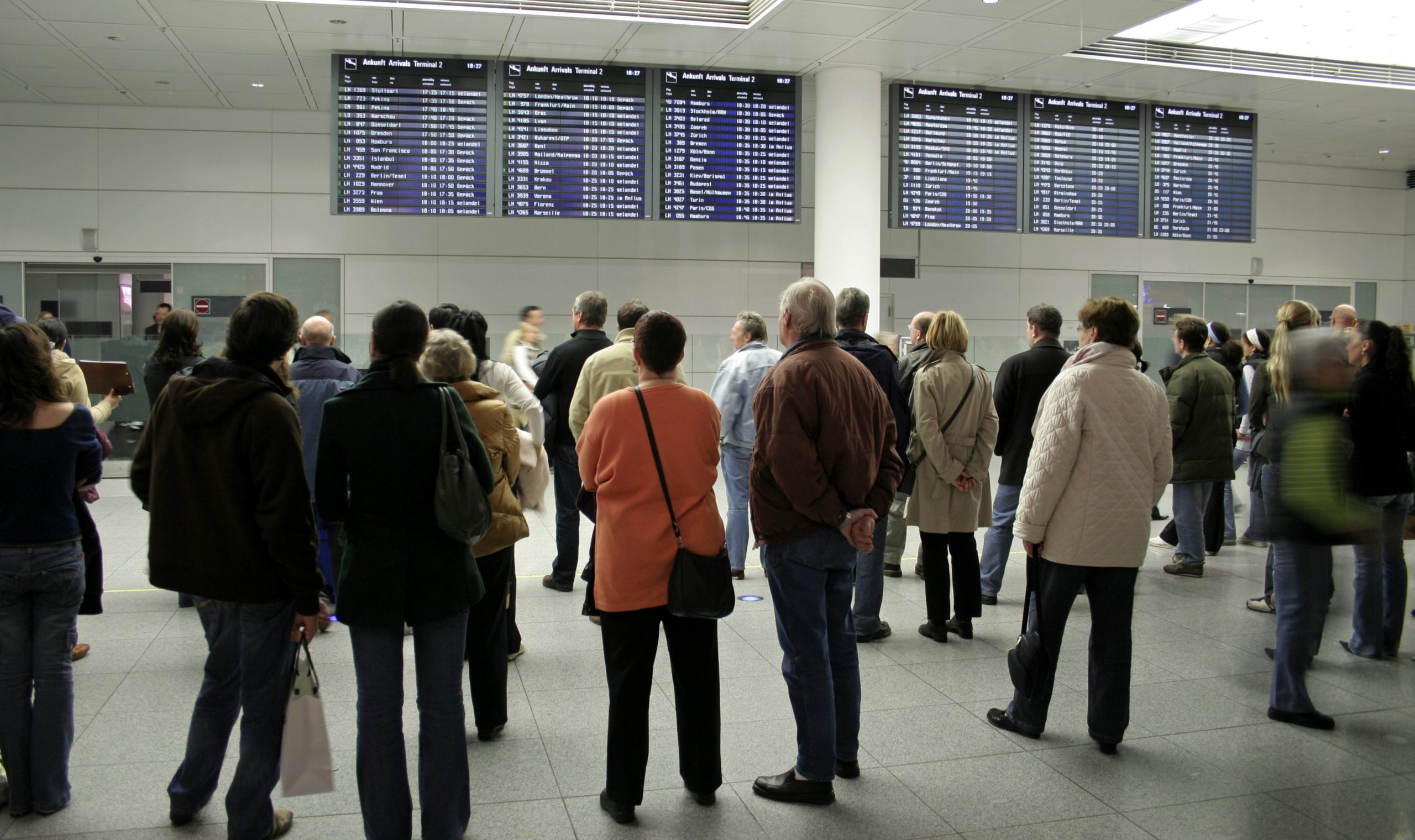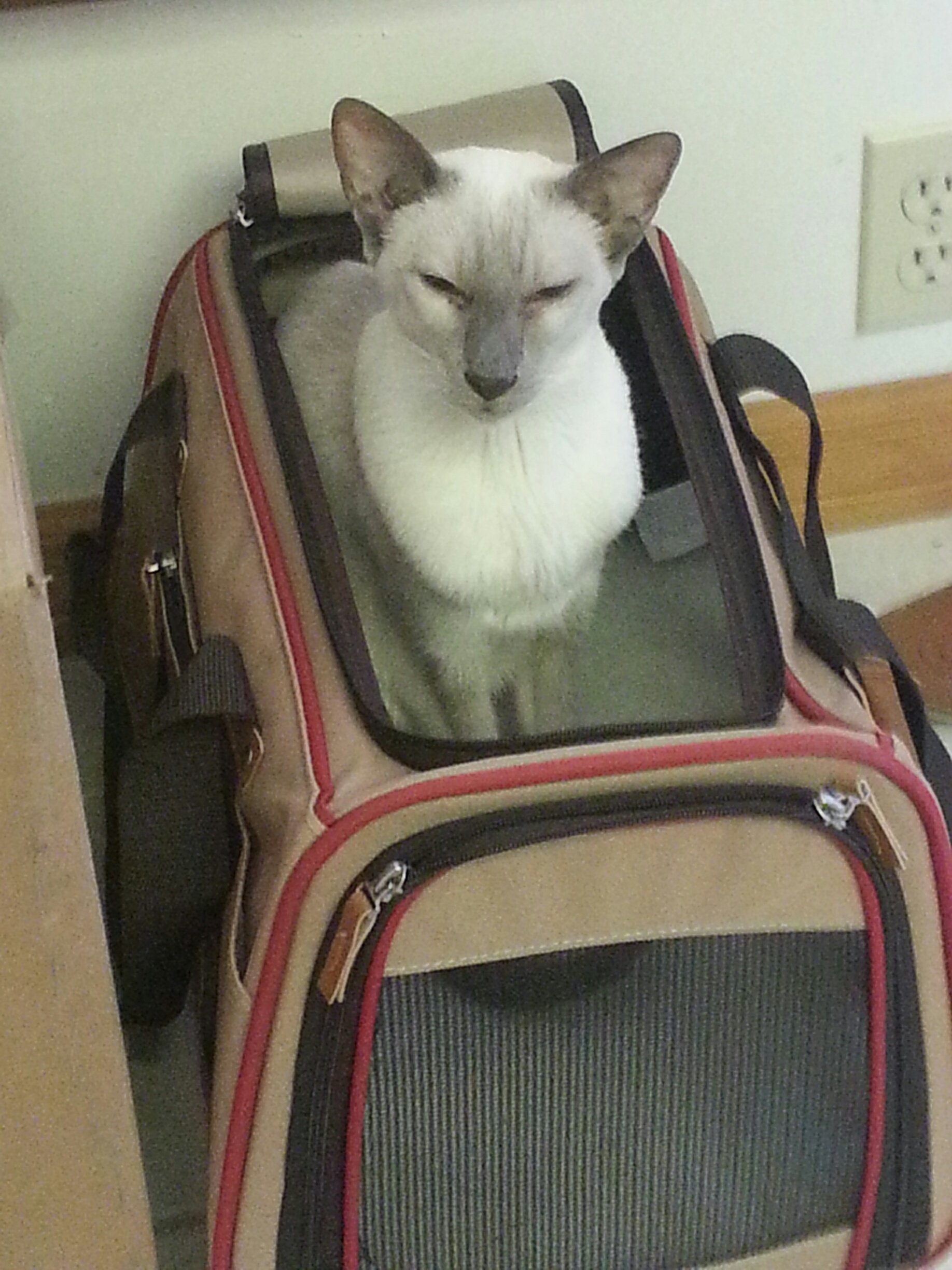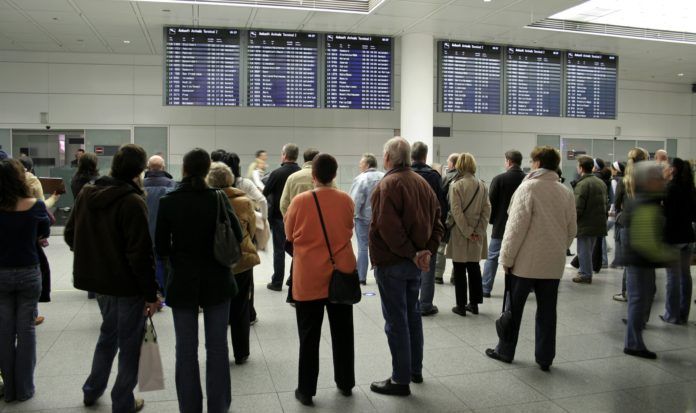If you are planning to fly with your cat — either for an extended vacation or a permanent long-distance relocation —there are two ways you can travel on a commercial airline: in the cabin with your pet, or with the animal as checked baggage in the cargo hold.
THINKSTOCK

Some airlines still allow pets to travel as checked baggage in the cargo bin. However, the various noises, odors and unfamiliar surroundings in cargo may terrify your cat. For your cat’s comfort and security — as well as your own peace of mind — cabin travel is the smartest option and the one to pursue if at all possible.
Airlines have a wide range of different policies concerning cats traveling in the cabin, so it is essential to contact your carrier well in advance to book your trip and get information regarding their policies. Because there are a limited number of pets allowed on each flight, make sure to arrive early at the airport on travel day. (Note: In-cabin pets are not allowed in first class, business class or business elite on international flights.)
Fees for in-cabin pets within the U.S. can range from $100 to $125 each way, with additional charges for each stopover of more than four hours.
Airline Regulations for Bringing Cats on Planes
To ensure easier air travel with your cat, you need to follow airline guidelines.
Health Certificates: Some airlines don’t require health certificates for cats traveling in the cabin, but many do. Make sure you know the rules for the airline you choose, and carry the necessary documents. Cats checked as baggage always require health certificates. You can obtain more information from your veterinarian, the U.S. Department of Agriculture or the Department of Agriculture in your destination state. When a health certificate is required, it must be completed by a licensed vet within 10 days of departure and include:
1. Your name and address.
2. The cat’s tag numbers or tattoo number.
3. The cat’s age (USDA regulations require animals be at least 10 weeks old and fully weaned before traveling).
4. A statement that the cat is in good health. If the shipper knows that the pet is pregnant, this information must be noted on the health certificate.
5. List of administered inoculations, when applicable.
6. The veterinarian’s signature.
7. Date of the certificate.
Live Animal Checklist: You may be asked to complete a live animal checklist when you check in your cat. By signing the checklist, you are confirming that your cat has been offered food and water within four hours of check-in time. Store the certificate in the carrier pocket, or keep it with your plane tickets.
Airline-Compliant Cat Carrier: The maximum size limit for cat carriers is 19″ long x 13″ wide x 9″ high. Certain airlines sell their own carriers that meet their specific regulations. Soft carriers that fit under the seat are generally allowed; however, some airlines require hard-sided carriers.

When making your reservations, check with your airline to ensure that your carrier meets their specific guidelines. The Federal Aviation Administration requires that your pet container must remain properly stowed the entire time the airplane is moving on the airport surface, and for takeoff and landing.
Experts recommend that you find out in advance how much room there will be in the area under your seat in front of you. You can obtain that information by contacting your airline for your route and the type of plane in which you will be flying. Carriers for in-cabin cats are counted as carry-in baggage. Label the carrier with your name, address, phone number and your destination’s contact name and phone number.
Preparing to Fly with Your Cat
Airline travel can be very stressful for everyone involved. One easy tip for minimizing travel angst and keeping your cat calmer is to make careful preparation prior to your flight, and try to maintain a relaxed attitude yourself. One good way to avoid feeling rushed is by arriving at the airport early.
It’s a good idea to accustom your cat to a harness and leash well before your trip. Going through the X-ray metal detectors will require you to remove your cat from the carrier. Having a leash ready to attach to the harness will prevent your cat from escaping. Attach all necessary personal contact information to the collar or harness on an ID tag (be sure that the information is kept up-to-date). Keep the harness on your cat throughout the flight.
Having your cat microchipped is a good idea, too. Some countries require a microchip and will scan your pet to verify his identity. If there is a problem locating the chip, authorities may refuse entry for your pet and require quarantine (in the case of the UK, this can mean up to four months of quarantine if traveling from a country with a high incidence of rabies, for example).
Because microchips can migrate, it’s a good idea to have your veterinarian scan your cat to be sure that he can be identified at the port of entry. Again, make sure your contact information is updated and accurate.
Conditioning Your Cat to Tolerate the Carrier:
“Bear in mind that many cats loathe being in a carrier, since it is generally associated with an unpleasant vet visit: poked, prodded and getting injections,” explains Dr. Nicholas H. Dodman, Animal Behavior Clinic Director at the Cummings School of Veterinary Medicine at Tufts University. For a couple of weeks before the flight, leave the airline-approved carrier (preferably one that has a front-loading option) containing a cat toy or food treats open on the floor so the cat can enter and exit at will.
“If the cat is reticent to get into it, gently put the cat into the carrier and give him a treat. You want the cat to associate the carrier with good things. It all depends on your cat’s temperament. If you have an equable kitty — one that isn’t explosive — traveling may be easier,” continues Dr. Dodman.
“Then shut the door for a few minutes and let the cat spring free. Slowly start expanding the amount of time the cat is in the carrier, up to an hour. Lie on the floor next to the cat and talk to him reassuringly.”
Medicating Your Cat for the Flight Might Help
If you and your veterinarian agree that medicating a nervous cat is necessary, Dr. Dodman recommends Buspirone because it has anti-anxiety properties, and also works as an anti-emetic to counter motion sickness. To ascertain how long the medication works and your cat’s response, Dr. Dodman suggests taking a few “dry runs” on short car trips with your medicated cat in the carrier prior to the flight. Your veterinarian can prescribe the correct dose based on his weight.
Four hours before departure, you can feed your cat a light meal. During the flight, water can be offered to him in the carrier.
Fly Your Cat with Caution
Transporting a cat as checked baggage is not recommended unless there is absolutely no other alternative. In addition to the frightening loud noises and unfamiliar odors, there is also the potentially fatal risk of the cat escaping from the carrier and getting lost.
While airlines do their best to ensure the safety of pets checked as baggage, unforeseen and tragic events can and do happen. In 2011, a story about Jack, a cat who was lost at JFK, went viral. The clerk responsible for transporting the carrier unfortunately loaded one carrier on top of another. While waiting to be loaded onto the aircraft, the carrier balanced on the top fell to the ground, causing the bottom carrier to separate — and enabling Jack to escape.
Even though JFK personnel searched extensively, 61 days elapsed after the frightened cat went missing. On October 25, Jack fell through the ceiling in the customs area. Severely malnourished and dehydrated, he was rushed to a local veterinary clinic, but due to severe injuries and infection, he was euthanized.




